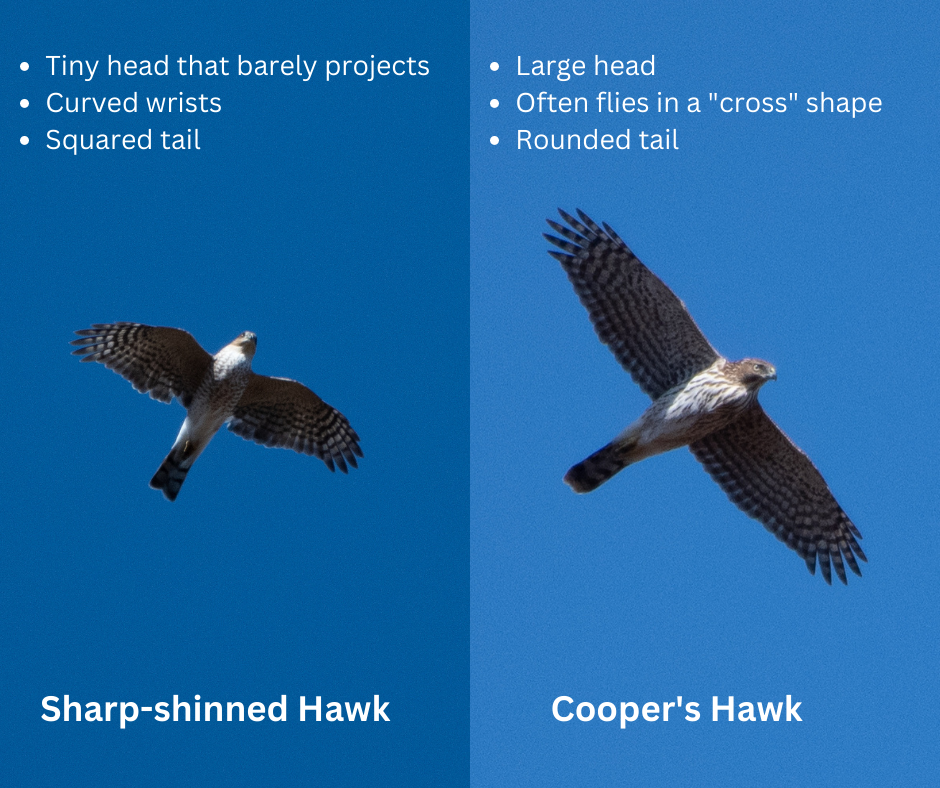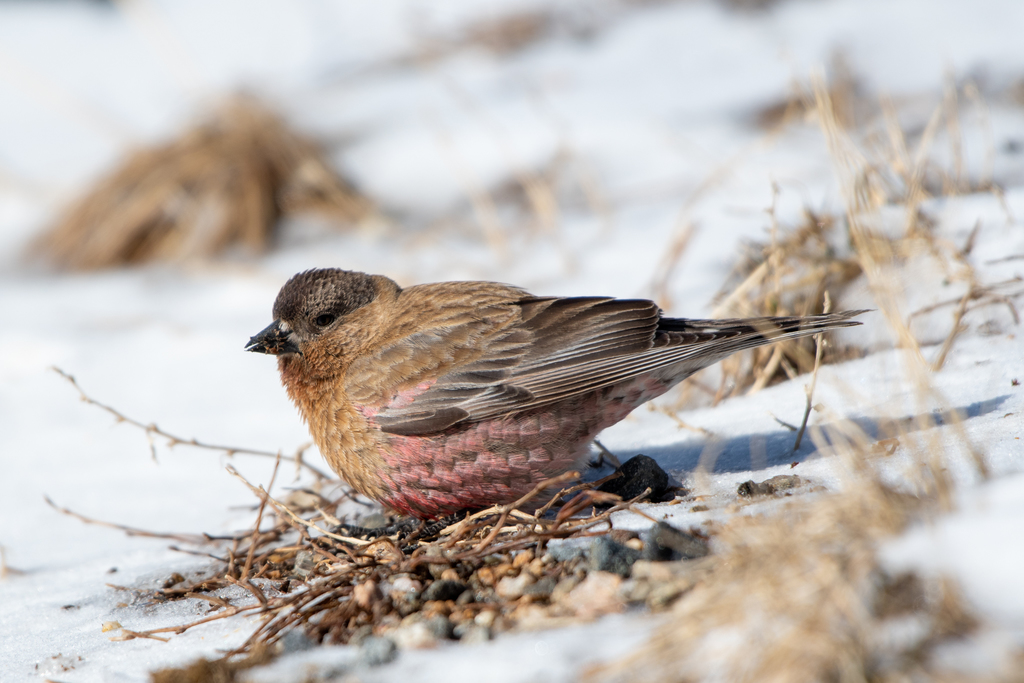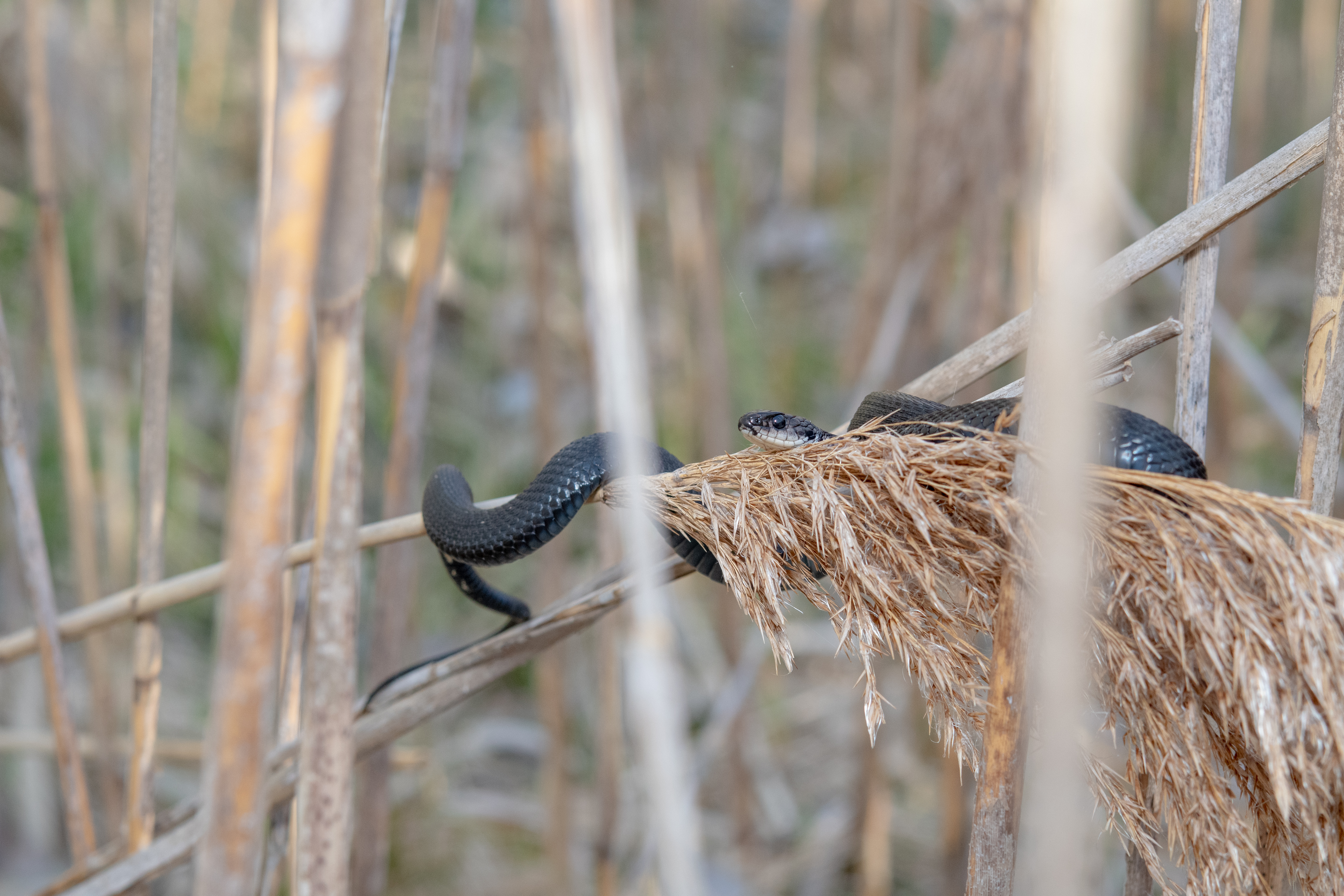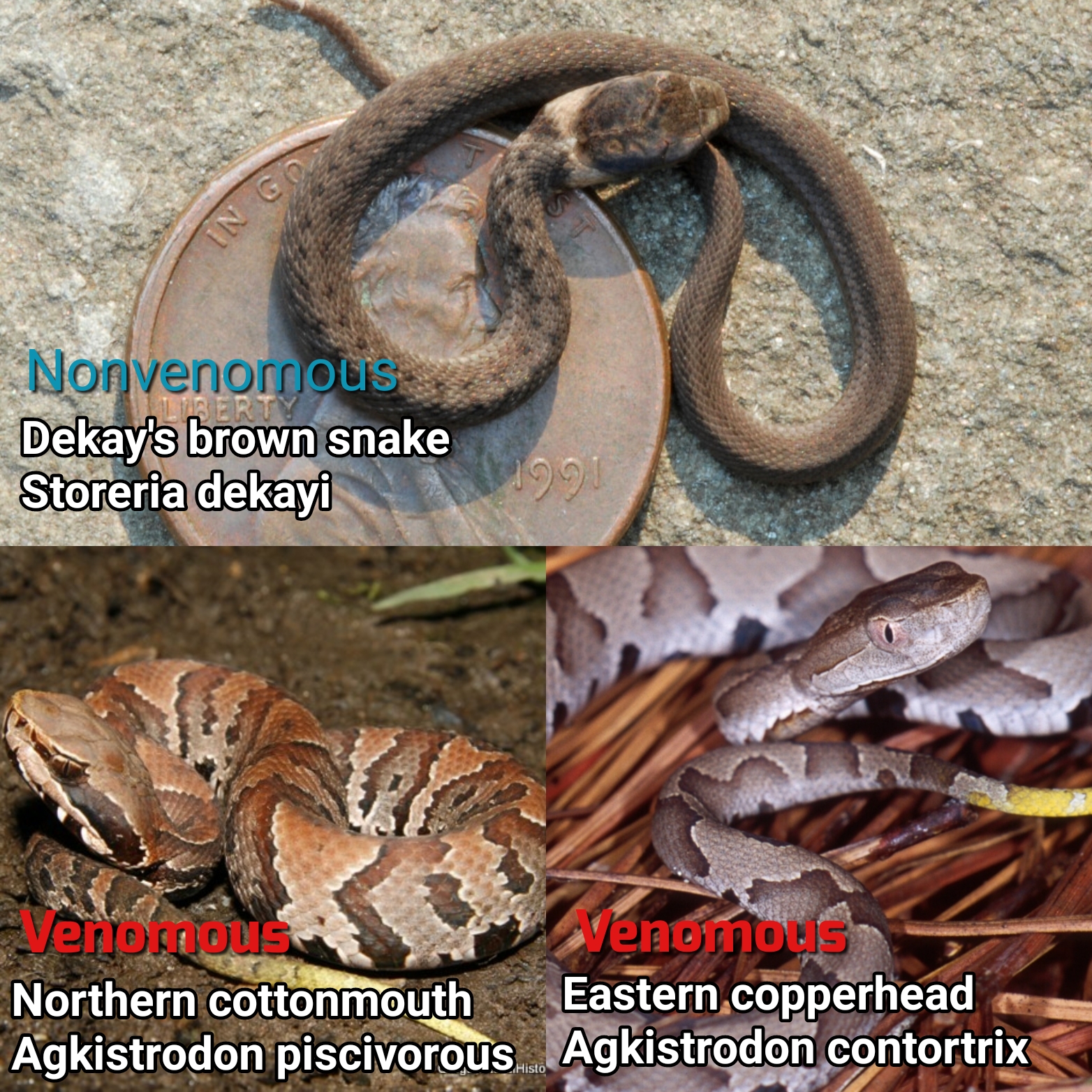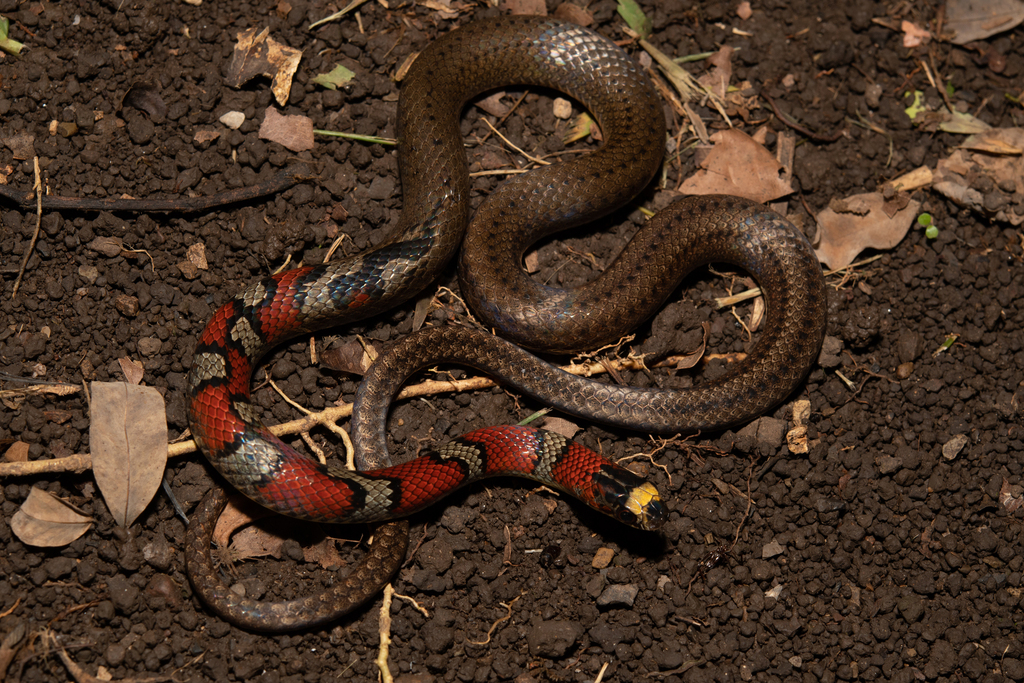A lot of baby or small snakes can be confusing if you're not sure what you're looking for. Fortunately, in the US, they're all relatively easy to ID with photos of decent enough quality.
In the eastern US, Dekay's brownsnakes are super common, both juveniles and adults. Their range largely overlaps with the eastern copperhead and only slightly overlaps with the cottonmouth. Both the copperhead and cottonmouth will have yellow tail tips as juveniles, and even when young, they are considerably larger than juvenile (and some adult) Dekay's brownsnakes. This brownsnake also usually has a pale neckband as a juvenile in addition to a spotted or chain-link pattern on its backside.
